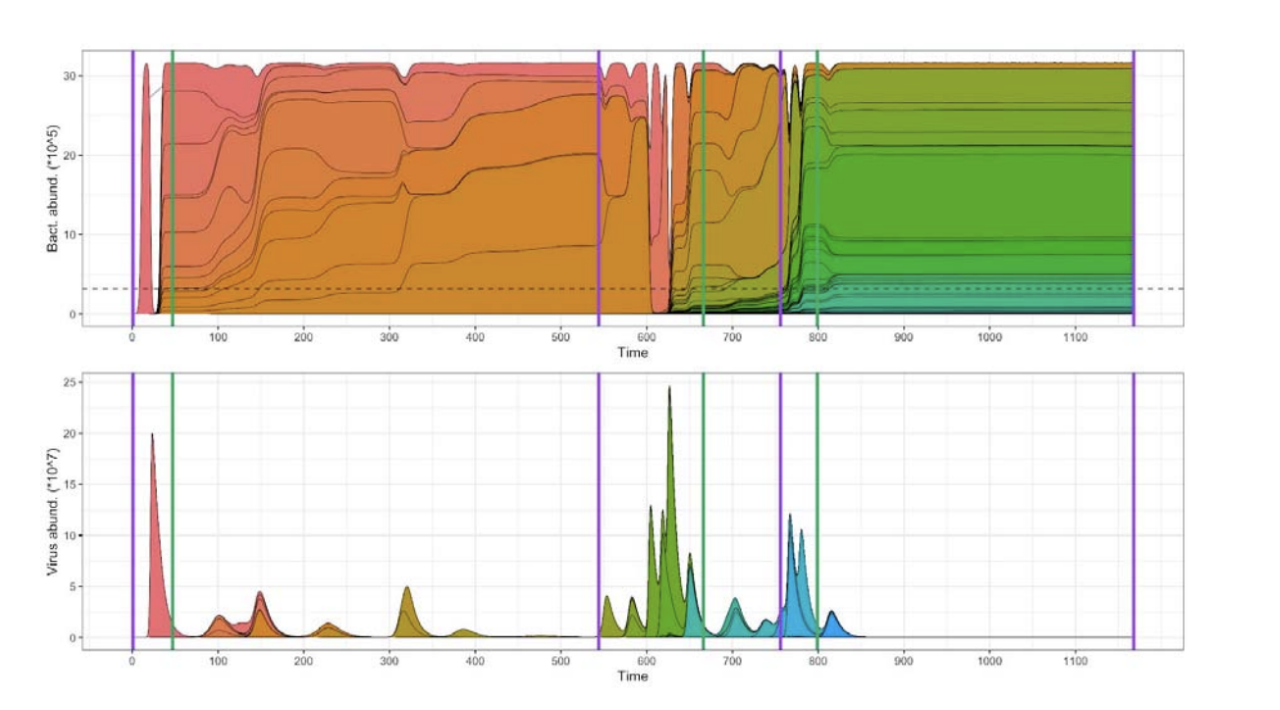By: Alisa King
Just like humans, microbes have equipped themselves with tools to recognize and defend themselves against viral invaders. In a continual evolutionary battle between virus and host, CRISPR-Cas acts as a major driving force of strain diversity in host-virus systems.

A new study led by Professor of Life Sciences Shai Pilosof (Ben-Gurion University of the Negev, Beer-Sheva, Israel), Professor of Microbiology Rachel Whitaker (IGOH theme leader/BCXT, University of Illinois), and Professor of Ecology and Evolution Mercedes Pascual (University of Chicago) highlights the role of diversified immunity in mediating host-pathogen interactions and its eco-evolutionary dynamics. The study also included Professor of Bioengineering and Bliss Faculty Scholar Sergei Maslov (BCXT/CABBI, University of Illinois), Sergio A. Alcal´a-Corona (University of Chicago), and PhD graduate students Ted Kim (University of Illinois) and Tong Wang (University of Illinois).
Their findings were reported in the journal Nature Ecology & Evolution.
“The motivation for this study was to figure out how the structure of immunity in microbial populations impacts the dynamics of virus-host interactions,” said Whitaker.
Now famous for its application in genetic engineering (Nobel Prize in Chemistry, 2020), the CRISPR-Cas system originated as an adaptive immune system for microbes. In this system, “protospacers” — segments of DNA from the infecting virus — are incorporated into the microbial host genome, termed “spacers.” The host molecular machinery uses these spacers to recognize, target and destroy viruses, analogous to the human adaptive immune system.
Researchers used computational models to explore the influence of microbial immune diversity on population dynamics of host-virus interactions. Their simulations revealed two alternating major regimes: the virus diversification regime (VDR) where viruses proliferate and diversify, and the host-controlled regime (HCR) where hosts constrain virus diversification, leading to their extinction.
As the viruses diversified in VDR regimes, so too did the hosts. The viruses that were able to escape host control harbored mutations in their protospacers, thereby leading to higher encounter rates with hosts. From these increased encounters, hosts were able to acquire new spacers, increasing CRISPR diversity. In turn, the immunity network exhibited weighted-nestedness, which enabled host control.
“Weighted-nestedness means that some microbial strains have redundant immunity to many viruses while others have limited immunity to a few,” said Whitaker. “It is this structure that leads to the dynamics of host stability punctuated by viral epidemics.”
To test the weighted-nestedness immunity structure predicted by their theory, researchers compared the data to empirical datasets from natural systems. Their findings revealed the presence of virus control via distributed and redundant immunity in these static empirical datasets.
“We next want to test this model in dynamic natural systems,” said Whitaker. “We are focused on collecting high-resolution temporal data on hot springs and wastewater treatment because they are relatively simple with few viruses and microbial species.”
By understanding the dynamics of host-virus populations in natural systems, researchers can better control microbes in industrial settings.
“Some industrial applications like wastewater treatment, yogurt, and solvent production depend on stable microbial populations,” said Whitaker. “Often, these applications fail because of viral epidemics that kill these microbes. We believe that understanding CRISPRs diversity and structure can support the design of stable microbial populations that are immune to virus infection.”
This work was funded by the Paul G. Allen Family Foundation through an Allen Distinguished Investigator award.
By: Alisa King
Photos By:


